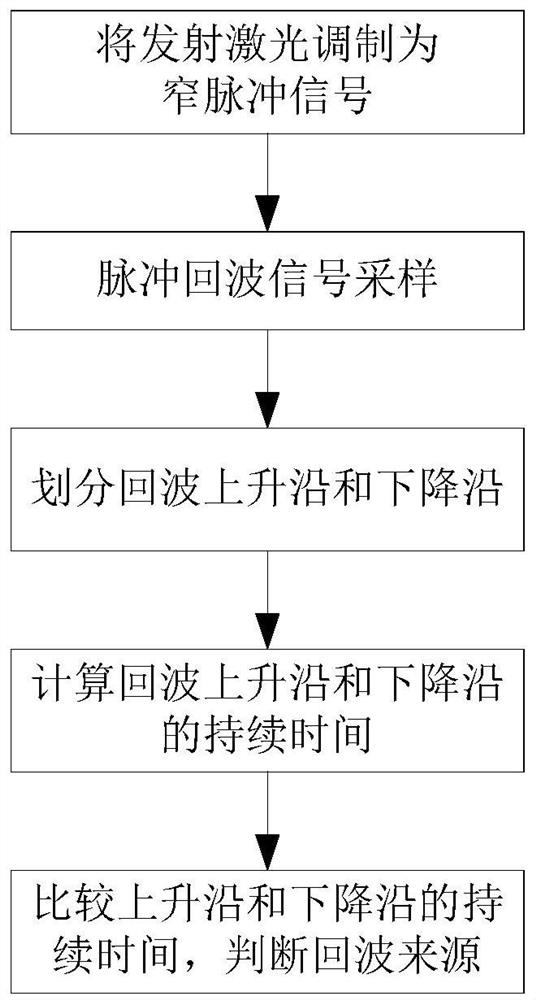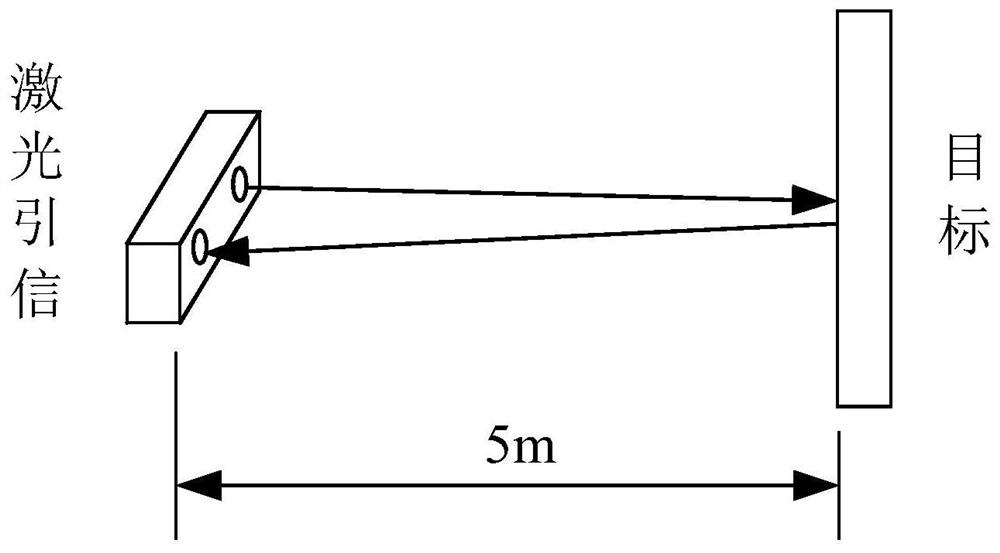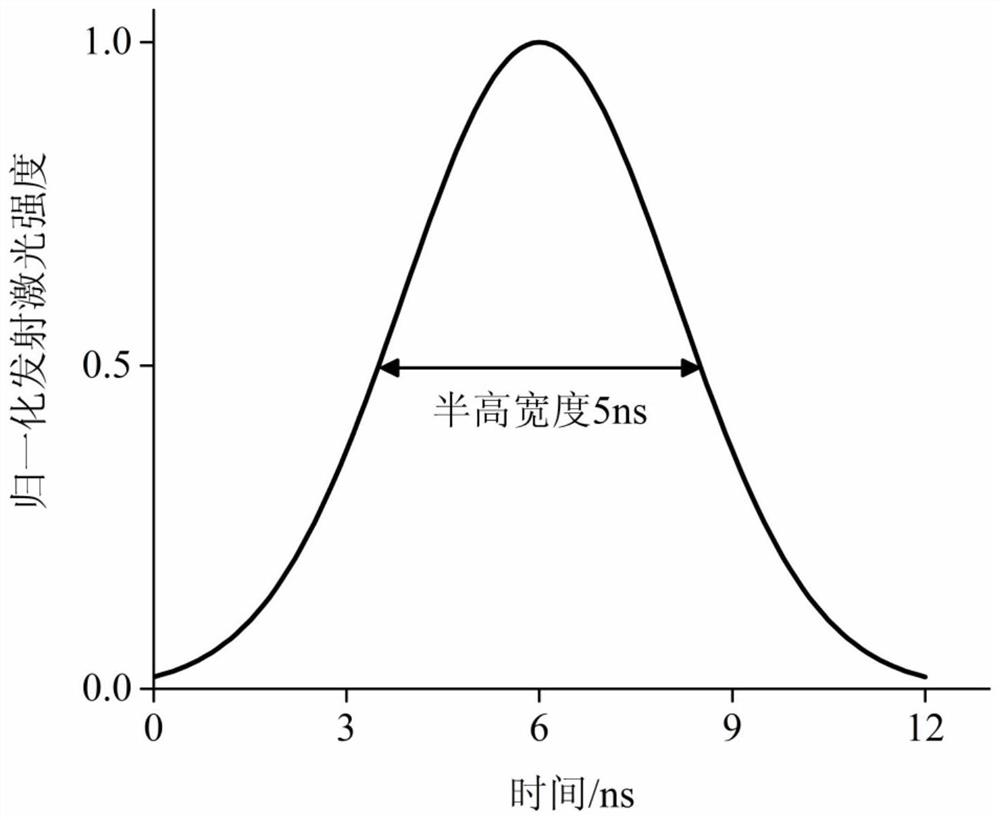An anti-aerosol interference method for pulsed laser fuze based on echo feature recognition
A pulsed laser and feature recognition technology, applied in the field of laser fuze, can solve the problem that laser fuze is easily interfered by aerosol, and achieve the effect of eliminating interference and improving accuracy
- Summary
- Abstract
- Description
- Claims
- Application Information
AI Technical Summary
Problems solved by technology
Method used
Image
Examples
Embodiment 1
[0025] A pulsed laser fuze with a laser wavelength of 0.86μm detects a target at a distance of 5m, the target is a Lambertian plate with a reflectivity of 0.1, and the target plane is perpendicular to the axis of the emitted laser, such as figure 2 shown.
[0026] Step 1. Modulate the emitted laser into a narrow pulse signal: the half-height width of the pulse signal is 5ns, such as image 3 shown;
[0027] Step 2: Pulse echo signal sampling: The pulse echo signal received by the laser fuze is as follows: Figure 4 As shown, set the sampling threshold to 4E-4, set the sampling time interval to 0.5ns, sample the pulse echo signal, and save the time and echo intensity of the sampling point;
[0028] Step 3. Divide the rising edge and falling edge of the echo: the sampling point with the largest echo intensity is at the time of 40ns, with the time of 40ns as the dividing point, the echo before the time of 40ns is the rising edge, and the echo after the time of 40ns is the fall...
Embodiment 2
[0033] A pulsed laser fuze with a laser wavelength of 0.86μm detects aerosols at a distance of 5m. The aerosol is a sandy aerosol with a visibility of 50m and a particle size range of 0.1-50μm, such as Figure 5 shown.
[0034] Step 1. Modulate the emitted laser into a narrow pulse signal: the half-height width of the pulse signal is 5ns, such as image 3 shown;
[0035] Step 2: Pulse echo signal sampling: The pulse echo signal received by the laser fuze is as follows: Image 6 As shown, set the sampling threshold to 4E-4, set the sampling time interval to 0.5ns, sample the pulse echo signal, and save the time and echo intensity of the sampling point;
[0036] Step 3: Divide the rising edge and falling edge of the echo: the sampling point with the largest echo intensity is at the time of 44ns, with the time of 44ns as the dividing point, the echo before the time of 44ns is the rising edge, and the echo after the time of 44ns is the falling edge ;
[0037] Step 4. Calculate...
PUM
 Login to View More
Login to View More Abstract
Description
Claims
Application Information
 Login to View More
Login to View More - R&D
- Intellectual Property
- Life Sciences
- Materials
- Tech Scout
- Unparalleled Data Quality
- Higher Quality Content
- 60% Fewer Hallucinations
Browse by: Latest US Patents, China's latest patents, Technical Efficacy Thesaurus, Application Domain, Technology Topic, Popular Technical Reports.
© 2025 PatSnap. All rights reserved.Legal|Privacy policy|Modern Slavery Act Transparency Statement|Sitemap|About US| Contact US: help@patsnap.com



